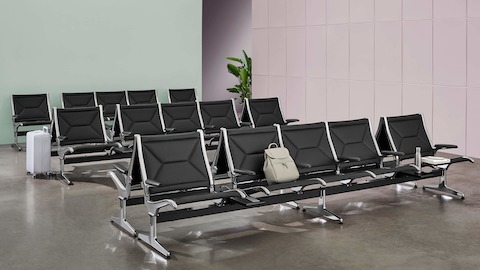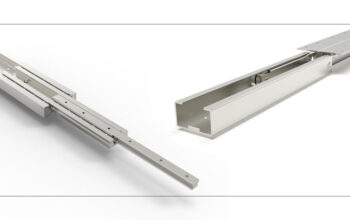Airports today are more than transit hubs; they are gateways that reflect a city’s identity, showcase architectural innovation, and elevate the passenger experience. Seating plays a crucial role in shaping these spaces, influencing everything from comfort and traffic flow to aesthetics and branding. As airports expand and modernize, operators face a key decision: should they invest in custom-designed seating solutions or rely on standard seating models? Understanding the differences between these options can help decision-makers choose the right approach for their facilities.
A leading airport seating manufacturer offers both custom and standard seating solutions to accommodate a wide range of operational and design goals. Whether an airport is aiming for a distinctive visual statement or prioritizing cost efficiency, manufacturers guide clients through material selection, layout planning, and compliance considerations to ensure the best possible outcome.
Standard Seating: Consistency and Cost-Effectiveness
Standard seating refers to pre-designed models that have been tested, refined, and produced at scale. These systems typically offer several benefits:
- Proven Performance: Standard seating solutions have been installed in numerous airports, which means they have a track record of durability and ease of maintenance.
- Cost Efficiency: Because they are produced in higher volumes, standard models are often more affordable than fully customized alternatives.
- Faster Lead Times: Standard seating is usually available with shorter production and delivery timelines, allowing airports to meet tight renovation schedules.
- Regulatory Compliance: Established seating models already comply with safety, fire resistance, and accessibility standards, reducing the need for additional certification.
Many airports prefer standard seating in high-traffic gate areas and waiting zones, where practicality and budget considerations are top priorities. These designs still offer a range of finishes, colors, and configurations to suit different terminal environments.
Custom Seating: Unique Identity and Tailored Experience
Custom seating, by contrast, is designed to meet the specific requirements and vision of an individual airport. This approach is ideal for operators who want to create a signature look or address specialized functional needs. Advantages of custom solutions include:
- Distinctive Aesthetics: Custom seating allows architects and designers to incorporate branding elements, regional influences, and unique color palettes that reflect the airport’s identity.
- Tailored Functionality: Airports with specific passenger demographics or operational challenges can create seating that aligns with those needs. For example, custom configurations might include integrated workstations, family zones, or high-backed seats for privacy.
- Optimized Layouts: Custom systems can be designed to fit unusual floor plans or architectural features, ensuring efficient use of space and smooth passenger flow.
- Enhanced Comfort: Bespoke designs can address particular ergonomic requirements, improving the comfort of passengers during long layovers.
Custom seating often requires more time for design, prototyping, and testing. Additionally, costs are generally higher due to specialized materials, tooling, and lower production volumes. However, for airports looking to make a lasting impression, the investment can be well worth it.
Blending Custom and Standard Solutions
Many airports opt for a hybrid approach that combines standard seating in high-capacity areas with custom elements in premium lounges, business centers, or iconic terminal zones. This strategy balances budget considerations with the desire to create memorable spaces. For example, an airport might use standard rows of seats in boarding gates but commission custom seating islands with integrated lighting and charging stations for central waiting areas.
Manufacturers help airports coordinate finishes and materials across both standard and custom solutions to ensure a cohesive design language throughout the terminal.
Considerations When Choosing Between Custom and Standard Seating
When evaluating whether to pursue custom, standard, or blended seating solutions, airport operators should consider:
- Passenger Demographics: Are travelers primarily business passengers who need workspaces, or vacationers who value relaxation areas?
- Budget Constraints: What level of investment is feasible within renovation or expansion plans?
- Branding and Identity: Is a distinctive visual statement a priority for the airport’s reputation and marketing?
- Timeline Requirements: How quickly must the seating be installed and ready for use?
- Maintenance and Lifespan: Will custom finishes require more care or incur higher long-term costs?
Collaboration between airport planners, architects, and seating manufacturers is essential to weigh these factors and develop the best strategy.
Conclusion
The choice between custom and standard seating is a defining decision that impacts an airport’s identity, passenger satisfaction, and operational efficiency. Standard seating offers reliability, cost savings, and quick deployment, while custom solutions deliver unique experiences and tailored functionality. By working closely with experienced manufacturers, airports can create environments that serve travelers’ needs and express a clear vision of place. Whether through timeless standard designs or bold custom statements, the seating in today’s airports is a powerful tool for shaping how the world experiences travel.




